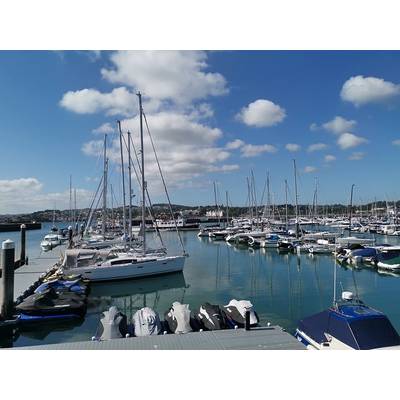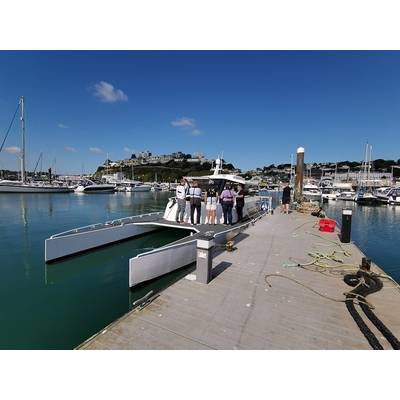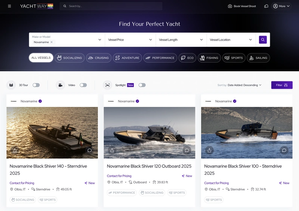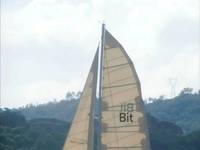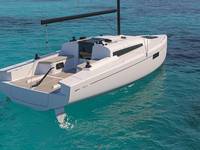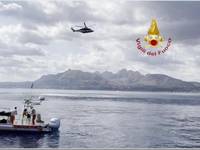Teignbridge Propels Interest at HRV1 Sea Trial
Torbay Harbour and Royal Torbay Yacht Club // Teignbridge Propellers hosted a group of members of the marine community recently to experience the HRV1 research vessel in action.
Guests were able to see live-action, first-hand data onboard the MCA category 4 coded catamaran. Back on shore at the Royal Torquay Yacht Club, Teignbridge explained how data from physical testing on-board HRV1 is coupled with numerical simulation tools in an integrated design workflow to deliver high performance propellers. The event was the first of its kind and following the success of the day, Teignbridge Propellers is keen to host more in the future.
Nestled in the harbor of Torbay, the crystal blue waters and sunny sky greeted guests as they stepped on-board HRV1 for an informative outing at sea hosted by Ian Godfrey, the design development engineer and vessel skipper Leon Griffiths. The demonstration of the HRV1 included an introduction to the technological capabilities of the floating laboratory. This gave guests an opportunity to witness first-hand the vessels ability to test large scale propellers (up to 1200mm in diameter) and live monitor the propeller’s performance. By testing at diameters up to 4-6 larger than shore-based alternatives (including cavitation tunnels), HRV1 reduces the challenge of scaling performance results from model to full scale.
For the open day, HRV1 was fitted with a high efficiency propeller designed using Teignbridge’s integrated design approach as part of the two and a half years, $3.6m High Efficiency Propulsion Systems (HEPS) project completed as a collaboration with the Energy Technologies Institute. HRV1 is equipped with a high power onboard PC running LabVIEW data logging software to centralize and manage data from an array of best in class measurement technologies required to establish propeller performance and characterize the test environment for a given data set.
At the heart of the onboard measurement system is a propeller shaft mounted fiber optic strain gauge system developed in partnership City University of London as part of Teignbridge’s High Efficiency Propulsion Systems (HEPS) project. The system monitors changes in shaft geometry at a resolution of 10 picometers (0.00000001 millimeters) enabling very accurate measurement of propeller thrust and torque through the interpretation of an array of the fiber optic sensors.
The vessel’s speed through water is measured using a pair of Teledyne doppler velocity logs (DVLs) mounted one in each hull. The sensors measure the vessel velocity relative to a layer of water below the vessel, compensating for currents and removing the error of measure speed in the vessels own turbulent boundary layer. In addition to speed through water, the DVLs also have the ability to carry out seabed survey work and a high-frequency water profiling work including wake transect mapping.
Further data including test environment characterization data is collected by linking LabVIEW to the vessel and engine’s CAN bus systems which host a plethora of data including wind speed and direction, vessel heading and location, depth, engine speed and temperature etc. Back on land, guests were treated to nibbles and cream teas whilst Teignbridge engineers introduced their new integrated design approach to maximizing propeller performance by coupling physical testing with numerical simulation tools including computational fluid dynamics (CFD).
The presentation detailed on Teignbridge’s work on:
●Structural analysis
●Computational fluid dynamic analysis
●Combined structural and fluid dynamic analysis
●Open water, algorithm-driven design optimization
●Hull resistance and wakefield analysis leading to wake-adapted propeller design
●The HEPS project work targeted at C02 emission reduction from the Handysize end of the merchant vessel fleet operating in UK waters
●The newly patented, Clamp on Blade, replaceable blade propeller from Teignbridge


